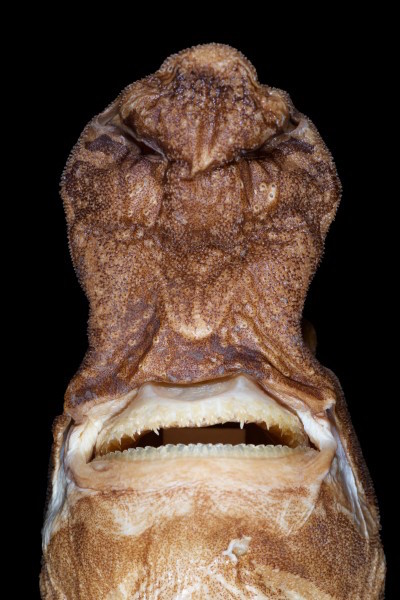Super Schnozzle: Tiny, Glow-in-the-Dark Shark Has a Huge Nose

A glow-in-the-dark shark that has a mouthful of pointy teeth and an impressively large, bulbous nose is also quite a lightweight — about the weight of a pineapple, according to a new study.
It's taken researchers more than 17 years to identify this remarkable species, which lives more than 1,000 feet (305 meters) underwater off the coast of the Northwestern Hawaiian Islands. But researchers said the shark is so distinctive, it was well worth the wait to describe it.
"There are only about 450 known species of sharks worldwide, and you don't come across a new species all that often," study co-researcher Stephen Kajiura, a professor of biological sciences and director of the Elasmobranch Research Laboratory at Florida Atlantic University, said in a statement. "A large part of biodiversity is still unknown, so for us to stumble upon a tiny, new species of shark in a gigantic ocean is really thrilling." [In Photos: Glow-in-the-Dark Sharks]
The roughly 1-foot-long (0.3 m) shark weighs just under 2 lbs. (0.9 kilograms) and is a member of the lanternshark family, a group of sharks that have photophores (light-producing organs) on their bodies. Most lanternsharks are small, including the 1.7-foot-long (0.5 m) glowing ninja shark (Etmopterus benchleyi) that lives in the Pacific Ocean off the coast of Central America.

When the researchers first studied three of the collected shark specimens, they didn't realize they represented a new species. Instead, after they submitted a study on the findings, a reviewer told them that the sharks were a newfound species.
The research team named the new species Laila's lanternshark, or Etmopterus lailae, after Laila Mostello-Wetherbee, a shark enthusiast and daughter of study co-researcher Brad Wetherbee.
"The unique features and characteristics of this new species really set it apart from the other lanternsharks," Kajiura said. "For one thing, it has a strange head shape and an unusually large and bulgy snout where its nostrils and olfactory organs are located. These creatures are living in a deep-sea environment with almost no light, so they need to have a big sniffer to find food."
Sign up for the Live Science daily newsletter now
Get the world’s most fascinating discoveries delivered straight to your inbox.

In addition, E. lailae has flank markings on its belly and a naked patch without scales on the underside of its snout. It also has a different number of vertebrae and fewer teeth in its mouth compared with other lanternsharks, the researchers found.
One of E. lailae's most stunning features is its ability to glow in the dark. Specifically, the flank markings on E. lailae's belly luminesce, the researchers said. Although it's unclear why lanternsharks such as E. lailae glow, scientists think that it likely helps the sharks recognize mates, camouflage themselves and lure prey toward them.
The study was published online in February in the journal Zootaxa.
Original article on Live Science.

Laura is the archaeology and Life's Little Mysteries editor at Live Science. She also reports on general science, including paleontology. Her work has appeared in The New York Times, Scholastic, Popular Science and Spectrum, a site on autism research. She has won multiple awards from the Society of Professional Journalists and the Washington Newspaper Publishers Association for her reporting at a weekly newspaper near Seattle. Laura holds a bachelor's degree in English literature and psychology from Washington University in St. Louis and a master's degree in science writing from NYU.









